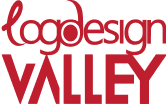There are no shortcuts to creating an appealing logo; if you skip over any steps in the design process, your final product won’t be at its best. In order to complete the project successfully and quickly, you owe it to both your clients and your design portfolio to use a wise logo design agency method. Regardless of how wide or narrow your circle of influence is, everyone requires a visual representation of their brand or business. That is why logos are important since they become the image that people have of your company or startup. The logo is not just one of the most significant graphic design tasks your company will ever do, but it’s also one of the earliest exercises in creativity. Here are the 5 steps to making the ideal logo to help the process go more smoothly:
Step 1 Brand Evaluation
Understanding the brand’s essence and the company’s objectives is the first stage in the logo design process. This stage is referred to as Client Discovery. A logo is only as good as how it represents a company, so it won’t be effective until you first understand the image the brand wants to make. There is no one-size-fits-all approach to logo design.
The design brief ought to contain the majority of the details you require. It is up to the designer to get this information from clients who cannot express their desires or are unsure of them. Designers should examine the client’s true feelings about their company and the amazing work they perform in words that go beyond the official corporate statement—even in the case of the most intricate, well-written briefs. Long-term design success depends on you learning as much as possible about the business and the people working there.
After completing this phase, you ought to have your own well-informed opinion on the brand (supported by plenty of notes). In order to condense this material into important terms and phrases, you may now begin your brainstorming process. By expanding their overall brand impressions into linked ideas, designers can use a common brainstorming approach called mind mapping. Save your favorites because they will later help to strengthen your logo concepts. Your research isn’t complete, though.
Step 2 Research
The next stage is to use all the data from the discovery phase to conduct an additional study and draw conclusions that will help me in the ideation phase. As a designer, learning about the industry can help you better understand the context in which the logo will be used.
To ensure that the solutions you will later develop can function properly for the client, this phase aims to gain a deeper understanding of their industry. You now need to understand what can work, what is appropriate, and how to set the organization apart from its rivals. And gaining insight into the business from the viewpoint of the client can help. So putting yourself in the client’s shoes and further researching the market and rivals is an essential phase in the logo design process.
Step 3 Gain Inspiration
Finding inspiration from others who are already doing it is easy. Look up competing businesses and their logos in your industry and related ones. Thanks to this research, you’ll have a better understanding of what works, what doesn’t, and what you should avoid. Make a list of the hues, contours, visual elements, and fonts that you like and dislike. Your design will become more focused as a result. You can look at non-logo resources as well to get ideas. You could, for instance, Google the three phrases you would use to describe your business and see what images come up.
Step 4 Write a Creative Brief
If your team is unable to reach an agreement or if you are unable to explain why a logo is effective, the logo design process may become chaotic. A creative brief is an essential tool for keeping your team on the same page and in alignment. Your brief is a condensed version of your brand audit, allowing you to turn the results into specific design recommendations. A creative director or project manager typically creates the brief, but everyone participating in the logo design process should be aware of it.
Step 5 Choose Logo Designing Tool
Whether you work with a company or create a logo on your own, you must complete all the procedures listed to be ready and have all the information you need. However, if you create your logo, you will just need this component.
The best and most straightforward design tools are listed here.
- You may create a free online logo with PicMonkey, which is also free to use.
- Canva is a different design tool primarily used for social media but also offers choices for creating logos. It is likewise free and simple to use.
- Although LogoMakr appears more like a design program, it is clear and easy to use.
- More like Canva than DesignEvo, this free logo maker is solely focused on creating logos.





